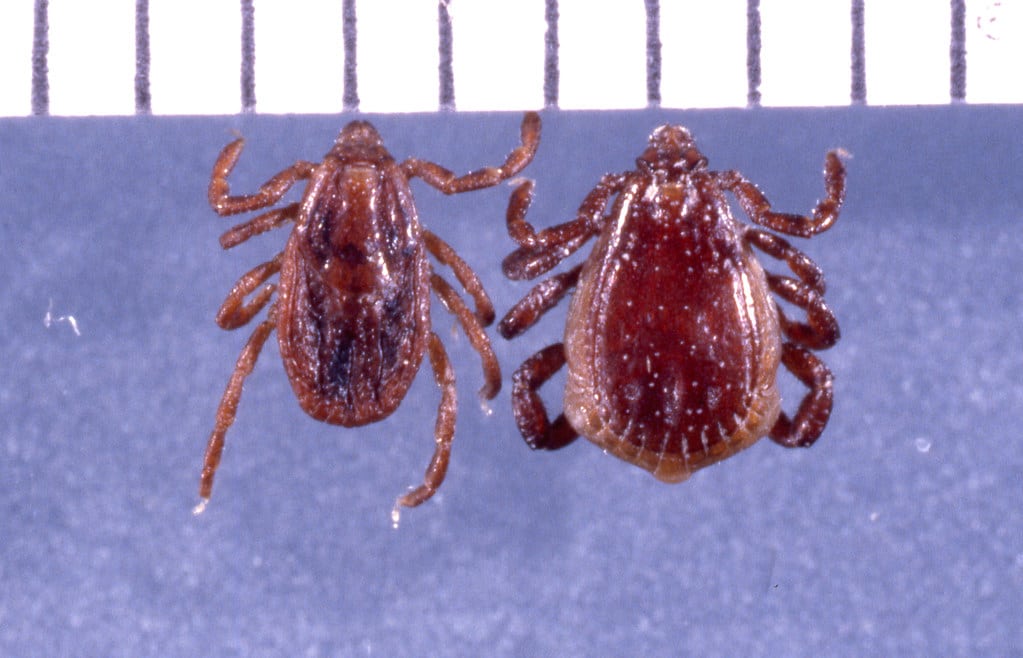Ehrlichiosis is a nasty tick-borne disease affecting dogs worldwide. It is caused by the bacterium Ehrlichia canis, which is transmitted primarily through the bite of the brown dog tick. This disease can be life-threatening if not diagnosed and treated promptly, making it crucial for dog owners to understand its symptoms, treatment options, and preventive measures. Milly was suffering from ehrlichiosis when we rescued her.

What is Ehrlichiosis?
Ehrlichiosis is an infectious disease that affects dogs’ white blood cells, leading to a range of health issues. The disease progresses through three stages: acute, subclinical, and chronic.
- Acute Phase: This initial stage occurs 1-3 weeks after a tick bite. Symptoms may include fever, lethargy, loss of appetite, weight loss, swollen lymph nodes, and bleeding disorders. This phase typically lasts two to four weeks.
- Subclinical Phase: During this stage, the dog might not show any visible symptoms, but the infection persists in the spleen. Some dogs may clear the infection, while others can progress to the chronic stage.
- Chronic Phase: In this severe stage, symptoms can include anaemia, significant weight loss, neurological issues, eye problems, and bone marrow failure. Chronic ehrlichiosis can be fatal if not treated effectively.

Diagnosis
Diagnosing ehrlichiosis involves a combination of clinical signs, blood tests, and sometimes, more advanced testing. A vet will typically start with a complete blood count (CBC) and a serologic test. These tests help confirm the presence of the infection and assess the extent of its impact on the dog’s health.
Treatment
The primary treatment for ehrlichiosis in dogs is the administration of antibiotics, with doxycycline being the most commonly prescribed. The treatment duration usually spans 4-6 weeks. In cases of severe anaemia or bleeding disorders, additional supportive care, such as blood transfusions, may be necessary. It’s important for dog owners to follow the vet’s treatment plan strictly and complete the full course of antibiotics to ensure the infection is thoroughly eradicated.
Best Management Practices for Prevention
Preventing ehrlichiosis involves minimising the risk of tick bites. Here are some best practices to protect your dog:
- Tick Control Products: Use veterinarian-recommended tick preventatives, such as topical treatments, tick collars, or oral medications. These products help kill ticks and prevent them from attaching to your dog.
- Regular Tick Checks: After outdoor activities, thoroughly check your dog for ticks, especially in areas like the ears, neck, and underbelly. Promptly remove any ticks found.
- Environmental Control: Keep your dog’s living environment clean and tick-free. Regularly mow lawns, clear tall grasses, and remove leaf litter where ticks might thrive. Consider using tick control products in your yard or garden.
- Avoid Tick-Infested Areas: Limit your dog’s exposure to areas known to be infested with ticks, such as dense woodlands and tall grass fields, especially during peak tick season.
- Routine Veterinary Check-ups: Regular veterinary visits are essential for early detection and prevention. Your veterinarian can provide guidance on the most effective tick prevention strategies for your region and your dog’s lifestyle.
- Vaccination: In some regions, vaccines are available for certain types of ehrlichiosis. Consult your veterinarian about the availability and suitability of vaccination for your dog.
Conclusion
Ehrlichiosis is a serious tick-borne disease that requires vigilance and proactive care from dog owners. By understanding the disease, recognising its symptoms, and adhering to preventive measures, you can significantly reduce the risk of your dog contracting this potentially fatal infection. Always consult with your veterinarian for the best advice and treatment options tailored to your dog’s needs. Through informed care and prevention, we can keep our beloved canine companions healthy and safe from ehrlichiosis and other tick-borne diseases.
Like this topic? Subscribe to our Newsletter or consider making a donation so we can continue to provide free pet care tips.